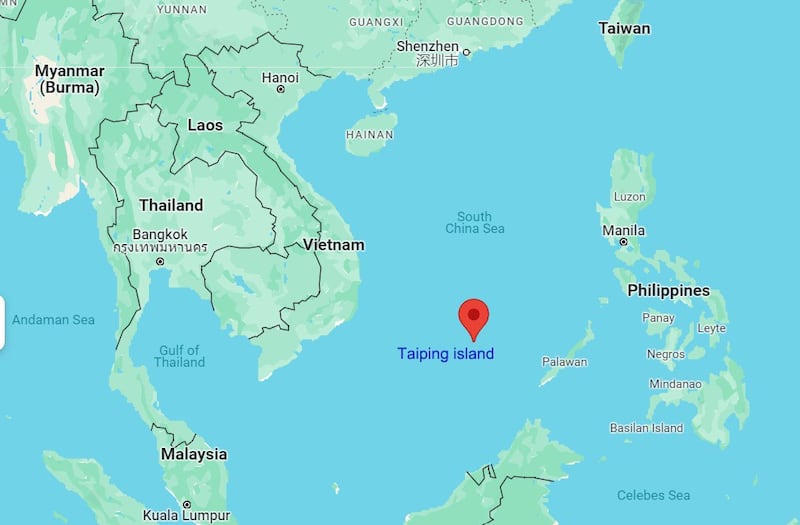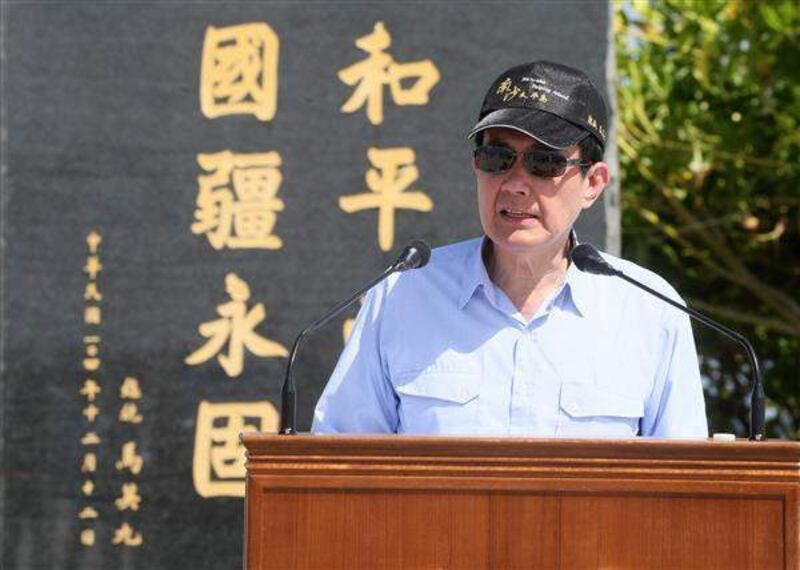A group of 20 Taiwanese lawmakers is set to arrive at disputed Taiping island in the South China Sea on Saturday on a visit likely to provoke protests from some of Taiwan’s neighbors.
Taiwan has occupied the island, also known as Itu Aba since 1956, but it is also claimed by Vietnam, the Philippines and China.
The group of legislators from the opposition Kuomintang (KMT) and Taiwan People’s Party plans to spend a morning on the island to declare sovereignty, inspect newly developed facilities such as a harbor and typhoon shelter, and greet troops stationed there, according to the head of the delegation, Ma Wen-chun.
Ma, who co-chairs the legislature's Foreign and National Defense Committee, wrote on her Facebook page on Thursday that the Republic of China (Taiwan) "has always stood firm in protecting Taiping island" and that its sovereignty was irrevocable.
She criticized the ruling Democratic Progressive Party (DPP) for failing to support calls for President Tsai Ing-wen to visit Taiping island before she leaves office.
No DPP legislator has registered to join Saturday’s trip.
Message to DPP
The Taiping visit takes place just two days before Tsai’s successor, Lai Ching-te, is sworn in as president on May 20.
The trip is aimed at sending a defiant message about Taiwan’s sovereignty to the DPP, said Lin Ying-yu, an assistant professor at Tamkang University’s Graduate Institute of International Affairs and Strategic Studies.
“The opposition wants to convey the criticism that the DPP’s stance is too weak in defending the sovereignty over our islands,” Lin told Radio Free Asia.

Taiping – the largest of the naturally formed features within the Spratly archipelago – is 1,600 km (994 miles) from Taiwan’s Kaohsiung city, 380 km (205 miles) from Palawan island in the Philippines and 580 km (360 miles) from Vietnam’s central coast.
As both Vietnam and the Philippines also claim the island, they are likely to protest the visit, Lin said.
Vietnam’s ministry of foreign affairs did not immediately respond to RFA’s inquiries.
A Vietnamese political scientist, Huynh Tam Sang from Vietnam National University, said that the KMT was trying to put pressure on the DPP and incoming President Lai.
“The fact that the DPP has remained muted over this contentious territorial issue opens the door for the KMT to boost its profile at home,” Sang told RFA.
The visit by Taiwanese lawmakers would “undoubtedly be met with some protests from Vietnam,” the analyst said, adding that it would be more symbolic and diplomatic rather than an angry resolute response as Hanoi “has no interest in fueling this issue”.
“Due to the mutual benefits of strong economic ties, increasing investments from Taiwan, and an influx of Vietnamese migrant workers to Taiwan, Hanoi has a vested interest in keeping relations amicable with Taipei,” Sang added.
The Philippines may adopt a similar approach amid China’s increased aggression in the South China Sea, analysts said. There are 155,000 Filipino migrant workers in Taiwan, accounting for 21% of the total foreign workforce.

President Tsai has not been to Taiping during her two terms in office but Presidents Chen Shui-bian and Ma Ying-jeou visited the island in 2008 and 2016, respectively. Vietnam protested strongly both times, calling the visits “serious violations of Vietnam’s sovereignty” and demanding Taiwan “immediately stop its wrongful actions”.
Edited by Mike Firn and Taejun Kang.
